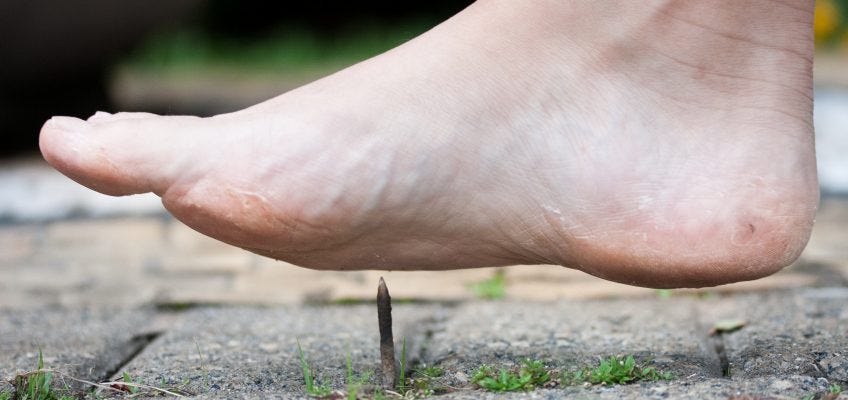Why Is It So Dangerous To Step On A Rusty Nail?
Written by Umme Rokshana
Stepping on a rusty nail is a scenario that many of us dread, I still remember how repulsed I felt when that one scene came up in ‘The Quiet Place’ movie. It's common sense that any foreign substances entering our body is an injury that would need immediate attention, but turns out there are still those who nonchalantly treat injuries like these. Like me. This is for all you folks out there who would try anything but seek medical attention in order to heal a severe wound.
The Role of Rust in Injury
You see, rust, or iron oxide, forms when iron, such as steel, is exposed to oxygen and moisture, something Earth has an abundance of, over time. While rust itself isn’t inherently harmful, it creates a perfect environment for certain bacteria to thrive. When a nail becomes rusty, its jagged surface can easily break the skin, providing a direct pathway for harmful pathogens to enter the body.
Tetanus: The Silent Killer
The most infamous threat from a rusty nail is the risk of tetanus, a potentially fatal infection caused by the bacteria Clostridium tetani. This bacterium is mostly found in soil, dust, and animal feces, and it can contaminate a nail long before it becomes rusty. When C. tetani enters the body through a puncture wound, it releases a neurotoxin called tetanospasmin, which interferes with our nervous system, leading to muscle stiffness and spasms. Without timely treatment, tetanus can cause severe complications, including death.
Beyond Tetanus: Other Bacterial Infections
Rusty nails can also introduce other bacteria into the wound, leading to infections such as cellulitis or abscesses. In some cases, the wound can become infected with the Staphylococcus or Streptococcus bacteria, which can spread rapidly and cause serious complications, including sepsis. The rust itself, though not the cause of infection, contributes to a more traumatic wound, increasing the likelihood of bacterial contamination.
Preventive Measures and Treatment
If you ever step on a rusty nail, immediate action is crucial. Clean the wound thoroughly with soap and water to reduce the risk of infection. SEEK MEDICAL ATTENTION to determine if you need a tetanus booster, especially if your last shot was more than ten years ago. Antibiotics may be prescribed to prevent or treat those bad bacterial infections, and in severe cases, surgery might be needed to remove the foreign material from the wound.
In conclusion, while the idea of stepping on a rusty nail might evoke fears of tetanus, the real danger lies more in the numerous combinations of bacteria that can enter the body through that one puncture wound, as mentioned above. Even if what you stepped on might not look rusty in any way, I can assure you, it is, just not something your naked eye would be able to see though.
References
https://www.mayoclinic.org/diseases-conditions/tetanus/symptoms-causes/syc-20351625
Written by Umme Rokshana from MEDILOQUY


